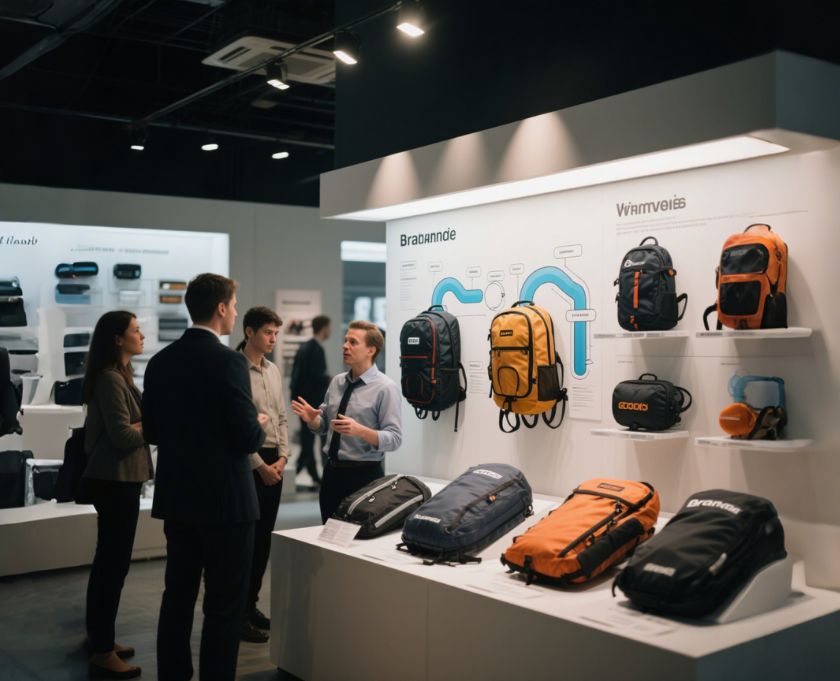Beautiful Plants For Your Interior

Vacuum compression backpacks have revolutionized travel, allowing users to carry more with less bulk. But behind this clever design lies fascinating science. From pressure dynamics to airtight sealing, vacuum compression technology in backpacks is a blend of physics and functional engineering.
In this article, we’ll unpack the science behind how vacuum compression backpacks work and why they’re so effective at saving space and protecting your belongings.
What Is Vacuum Compression Technology?
At its core, vacuum compression involves removing air from a sealed space to reduce the overall volume of its contents. By eliminating trapped air around soft items like clothes, the backpack compresses them into a more compact, space-efficient form.
This concept is borrowed from industrial vacuum packaging, but adapted for travel, mobility, and backpack use.
How Does a Vacuum Compression Backpack Work?
Let’s break it down step-by-step:
1. Packing and Sealing
Users place soft items—typically clothes—into the backpack’s compression compartment. This section is made of durable, flexible material designed to hold vacuum pressure. Once full, it’s sealed airtight using specialized zippers or valve-lock systems.
2. Air Removal
Once sealed, the backpack uses one of the following methods to remove air:
- Manual Valve System: The user rolls or presses the bag while air escapes through a one-way valve.
- Built-in Pump (Electric or Manual): Air is actively drawn out using a pump embedded in the backpack.
- External Pump Compatibility: Some models connect to a vacuum cleaner or hand pump for faster results.
Removing air decreases the internal pressure, allowing external atmospheric pressure to “compress” the contents naturally.
3. Maintaining the Vacuum Seal
Once the air is removed, the bag maintains a tight seal, keeping clothes compressed. This not only saves space but also limits exposure to moisture, dust, and wrinkles.
The Physics of Compression: Why It Works
Vacuum compression relies on basic physics principles:
- Air Pressure Differentials: When internal air is removed, the pressure outside the bag is greater than inside. This imbalance causes the bag to collapse inward, reducing volume.
- Volume Reduction Laws: According to Boyle’s Law, decreasing the pressure in a fixed space (by removing air) causes the volume of gases to drop, effectively compressing the contents.
- Material Resistance: The bag’s materials are engineered to withstand this external pressure without bursting, while remaining flexible enough to conform to compressed shapes.
Materials Used in Compression Backpacks
To enable safe compression and repeated use, manufacturers use:
- High-tensile nylon or polyester: For structural strength
- TPU-coated fabric layers: For airtight sealing and moisture resistance
- Silicone or rubber valve systems: For controlled air flow
- Heavy-duty compression zippers: For lasting performance under pressure
Advantages of Using Vacuum Compression in Travel Backpacks
✅ Space Efficiency
Remove air, and you instantly gain more packing room—ideal for travelers needing to pack light or avoid checked luggage.
✅ Wrinkle Prevention
Clothes stay tightly packed and less likely to shift or fold awkwardly, reducing wrinkles.
✅ Moisture & Dust Protection
An airtight seal keeps unwanted elements out—especially useful in humid or dusty environments.
✅ Versatility
Compression isn’t just for travel. These backpacks also serve well for storage, hiking, or emergency gear kits.
Limitations of Compression Technology
While efficient, vacuum compression is not flawless:
- Overcompression can crease delicate fabrics.
- Seals and valves require maintenance to remain airtight.
- Heavier items don’t compress as effectively.
- Some built-in pumps may fail if not charged or maintained properly.
Understanding these limitations helps users pack smarter and maintain product longevity.
Innovations in 2025: What’s New in Compression Backpacks?
Recent advancements in 2025 include:
- USB-C Rechargeable Pumps: Smaller, faster, and more efficient.
- AI Pressure Sensors: Automatically stop compression when optimal pressure is reached.
- Eco-Materials: Use of biodegradable or recycled fabrics with airtight properties.
- Modular Compartments: Allow selective compression in different zones of the backpack.
Conclusion
The science behind vacuum compression technology in backpacks is both simple and sophisticated. By leveraging physics—specifically air pressure dynamics—and combining it with smart materials and engineering, manufacturers have created a modern travel essential that maximizes space, protects belongings, and adds convenience to your journey.
Whether you’re packing for a business trip or preparing for a hiking expedition, understanding the technology behind your gear helps you use it more effectively—and appreciate just how clever it really is.